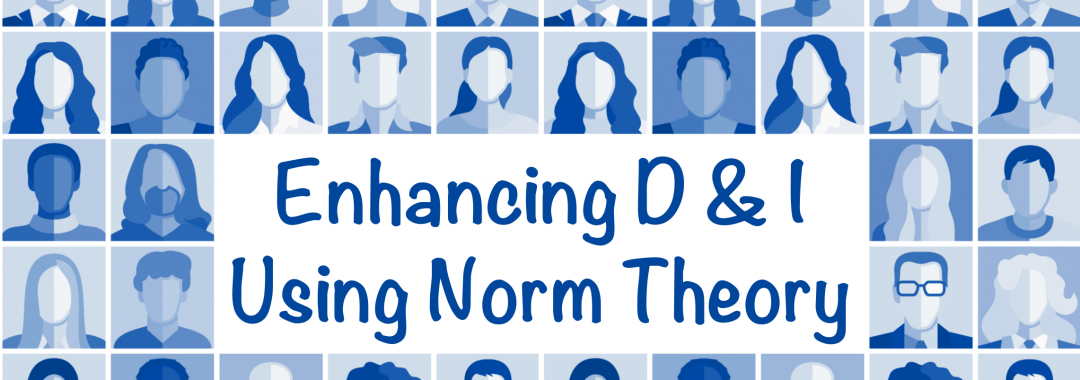
Fostering positive relationships between members of different social groups can be a major challenge in many walks of life, including in the workplace, in universities, and in communities.
Diversity workshops, with their frequent focus on implicit bias, micro-aggressions and other discriminatory behaviours, have thus become widespread. Yet might other methods be as effective, or even more effective, in fostering greater inclusion?
This is the question that Sohad Murrar and his colleagues decided to explore[1]. They tried applying norm theory and found it to be highly successful.
What is Norm Theory?
The business psychologist and best-selling author Robert Cialdini argues that there are two types of norm, which can be emphasised or avoided in communication in order to influence other people’s behaviour. A descriptive norm refers to behaviour that is common or widespread, while an injunctive norm refers to behaviour that is approved or disapproved of within a social group.
Cialdini maintains that the best way to influence people’s behaviour is as follows
- Give prominence in communication to frequent and approved/desirable behaviour (i.e. desirable descriptive norms)
- Show approved/desirable behaviour in images of people performing that behaviour
- Avoid giving prominence in communication to frequent but unacceptable behaviour (undesirable descriptive norms)
In other words: concentrate on the positive! (For further information on norm theory and on how Covid-19 messaging can be related to norm theory, see the University of Warwick expert comment, Part 1 and Part 2).
Applying Norm Theory to Diversity and Inclusion
Murrar and his colleagues, working in a US university context, carried out a series of studies with 2400 students to explore whether applying norm theory to diversity and inclusion could have a positive impact. They showed positive social messages (via a poster or a short video) to two sample groups, marginalised and non-marginalised.
They compared the impact of the messaging on the two groups and their results were extremely encouraging. In summary, this is what they found:

The improvement in marginalised students’ academic performance is particularly impressive, in that it’s an objective measure rather than a subjective self-reported measure. It was also long-lasting – their measures of impact were collected 10-12 weeks after the initial messaging.
Take-away thoughts
Like all research, this series of studies has its limitations, not least that it was carried out in a single context – a US university where most students genuinely held positive attitudes. So, we don’t know whether the findings can apply to other contexts, such as a university in a different country, or a workplace, or a setting where more participants’ attitudes are less positive.
Social norm messaging needs to be reflective of an actual situation; otherwise, it will come across as invalid and manipulative. So, in contexts of noticeably poor intergroup relations, a slightly different messaging design will be needed.
Nevertheless, social norm theory is very widely respected by psychologists and is particularly useful where there is a desire or need to change the behaviour of some members of a group, such as for environmental or health reasons. For instance, it has been shown to help reduce littering in public places, the amount of residential energy and water usage, and reduction in alcohol abuse. In the Covid-19 pandemic, the frequent reporting of the public’s lack of adherence to the regulations seemed to encourage others to break them as well; a social norm communication approach would have been beneficial, as many social psychologists argued at the time.
Murrar and his colleagues maintain that their messaging interventions (the creation of a poster and a video) are easily replicable and scalable. So, in terms of diversity training a social norm approach could well be a viable alternative for internal communications managers to the implicit bias training more conventionally on offer in organisations.
If you would like to know more about how social norm theory might be helpful in your situation, get in touch with us.
Professor Helen Spencer-Oatey, Director
References
[1] Murrar, S., Campbell, M. R. C., & Brauer, M. (2020). Exposure to peers’ pro-diversity attitudes increases inclusion and reduces the achievement gap. Nature Human Behaviour, 4 (September), 889–897. www.nature.com/nathumbehav.

